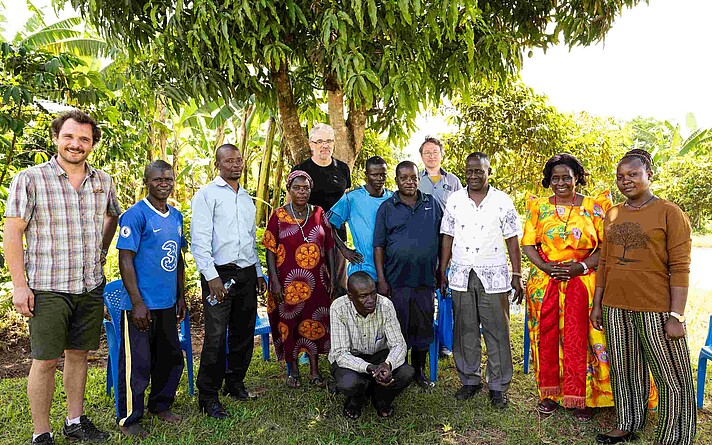As part of an Africa-UniNet project of the Austrian Agency for Education and Internationalization (OeAD), a cooperation between the Nkumba University in Uganda, the University of Applied Arts Vienna and the Salzburg University of Applied Sciences started in June. The opening excursion to Uganda has now taken place, promoting scientific exchange between the project team, local farmers and best-practice companies.

The project "Establishing diverse Applications of 'Luffa Aegyptiaca' for functional Objects Production" focuses on developing new uses for Luffa Aegyptiaca, better known as sponge gourd, which is cultivated in Uganda. In this country, the dried inner supporting structure of the elongated fruit is known as a skin cleansing sponge or from exfoliating products. Michael Ebner, Head of Furniture & Interior, and Junior Researcher Felix Prändl, who are both part of the project team, have now been able to meet the other project members at Nkumba University in Entebbe in Uganda in person and see the cultivation and technical possibilities for using the plant on site.
Re-regionalization with sponge pumpkin
"The aim is to strengthen local value creation instead of exporting the material, processing it elsewhere and generating profit abroad. The rural population is very poor and there is a lack of employment opportunities. This cooperation is intended to create opportunities to generate added value from the extremely fertile land that goes beyond pure food production and remains locally," says Felix Prändl, who returned from Uganda enriched by numerous cultural impressions.
Although the plant is native to the Central African region and thrives particularly well there, it is not yet recognized as a crop, according to Prändl.
For him, there are also important social aspects that the project wants to investigate and promote: "Local communities are hugely important in Uganda and can be strengthened through this collaboration. The challenge now is to find uses for the plant that are also practicable for these local communities." Although the technical possibilities for local processing are limited, the plant offers potential. For example, it could be used in composite or packaging materials, or in the medical sector, for example as a bio-based plaster substitute. After all, medical care in particular is still underdeveloped in rural areas and often too expensive for the population.
Biogenic research and development at the FH Salzburg
The team members from Kuchl Campus are contributing their expertise in biogenic materials research and product development to the project. The insightful impressions gained from the excursion are now being incorporated into the research and development work and the properties and potential uses of Luffa Aegyptiaca are being further researched, including in semester projects and students' final theses.
The project is one of 21 cooperative research projects between Austrian and African universities and research institutions that were made possible by the 3rd Africa-UniNet Call of the OeAD. The projects are funded by the Federal Ministry of Education, Science and Research and aim to achieve sustainable development in line with the United Nations Sustainable Development Goals.
